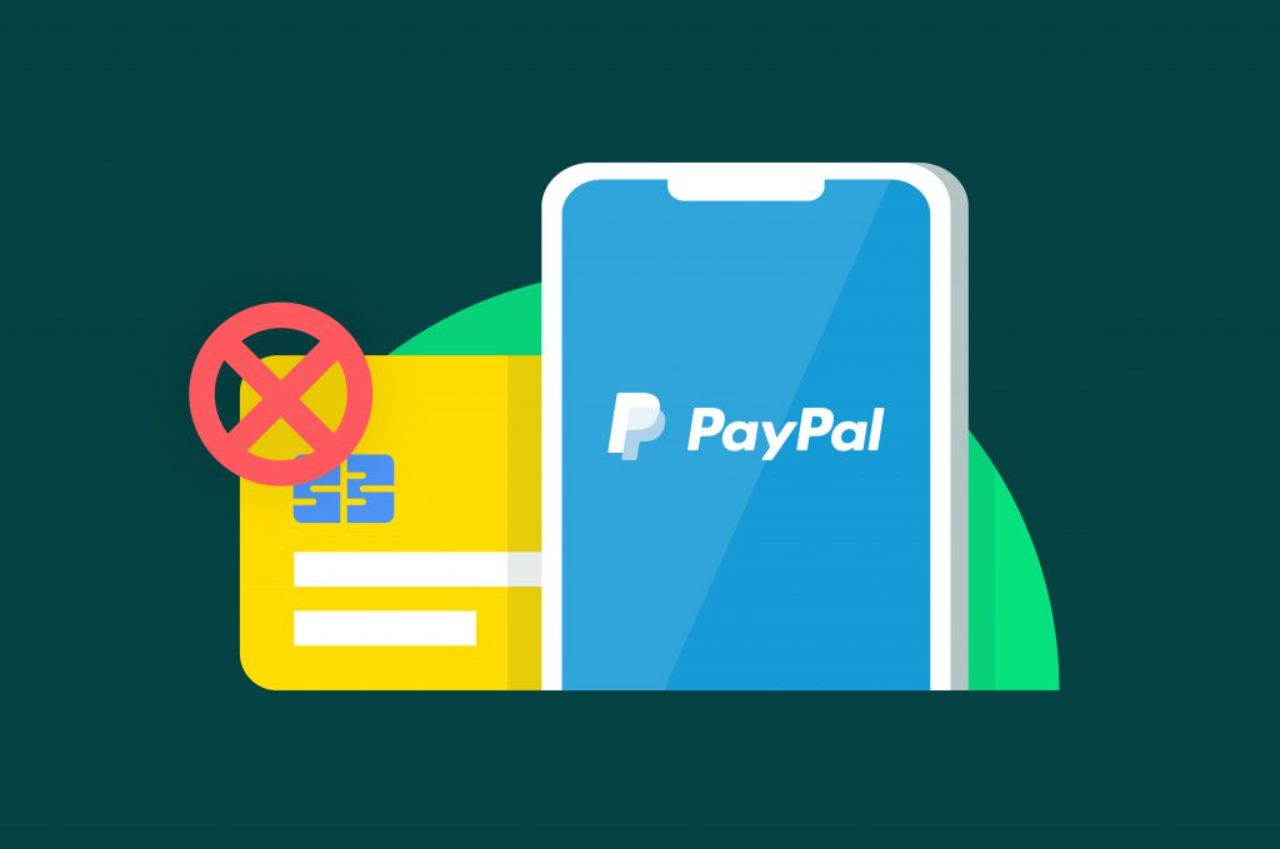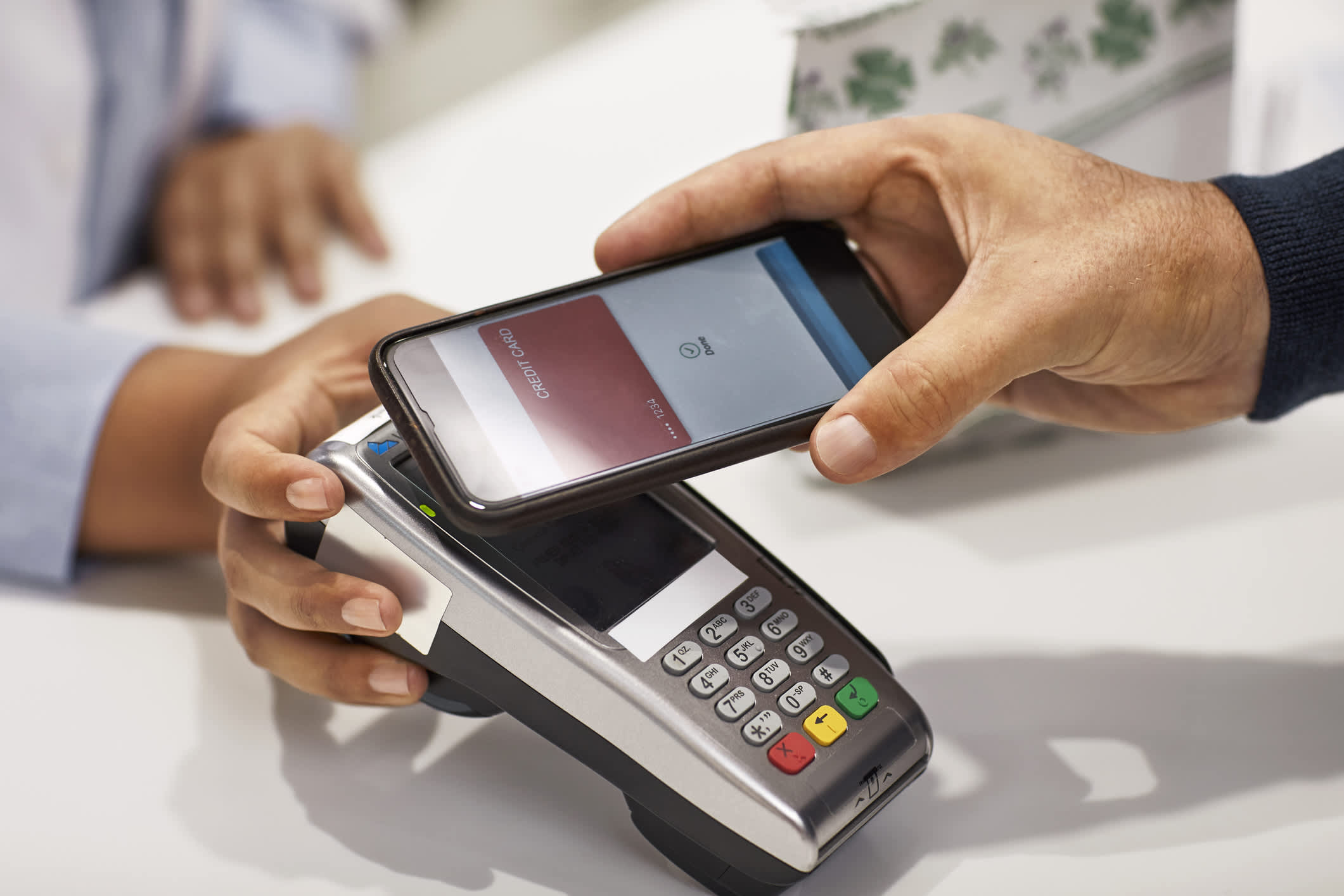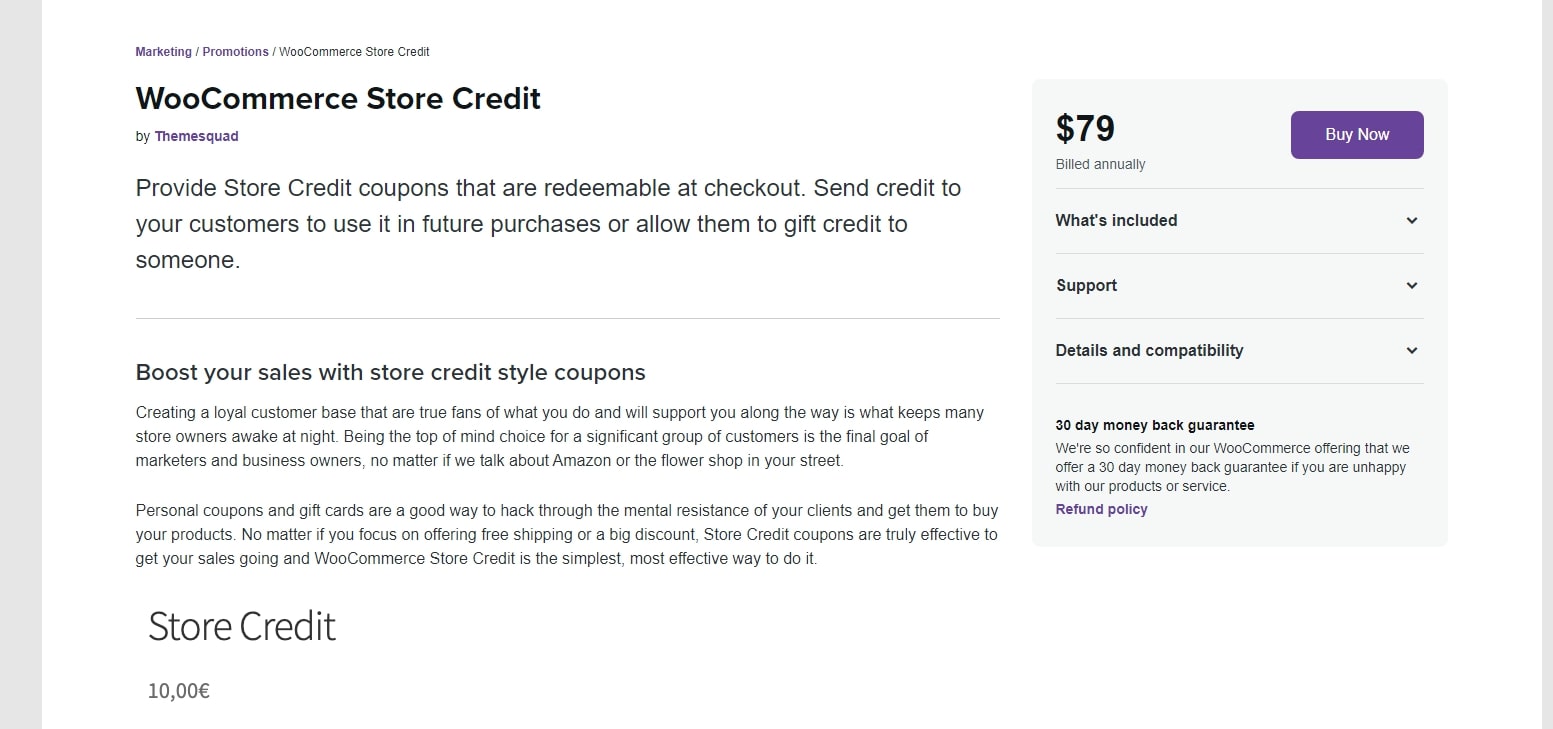

Finance
What Is In-Store Credit
Modified: January 15, 2024
Learn about in-store credit and how it can help you finance your purchases. Find out how it works and if it's the right option for you.
(Many of the links in this article redirect to a specific reviewed product. Your purchase of these products through affiliate links helps to generate commission for LiveWell, at no extra cost. Learn more)
Table of Contents
Introduction
Welcome to the world of in-store credit! In this article, we will explore what in-store credit is and how it can benefit you as a consumer. In-store credit is an alternative financing option provided by retailers that allows you to make purchases and pay for them over time, often with little or no interest.
In-store credit is a convenient way to shop for the things you need without having to pay the full amount upfront. It offers flexibility and convenience, especially when you don’t have enough cash on hand or prefer spreading out your payments over time.
With in-store credit, you can make purchases immediately and take advantage of special promotions or discounts offered by the retailer. Whether you need to buy clothing, electronics, furniture, or other goods, in-store credit allows you to enjoy your purchase right away while paying for it gradually.
The availability of in-store credit often depends on your creditworthiness, as retailers will assess your ability to repay the borrowed amount. However, in-store credit can sometimes be extended to individuals with limited or no credit history, providing an opportunity to start building credit.
In the next sections, we will delve deeper into how in-store credit works, its benefits and potential drawbacks, how to obtain it, and how to effectively manage and use in-store credit. We will also compare in-store credit with other financing options to help you make informed decisions about your personal finances.
So, if you’re ready to learn more about in-store credit, keep reading to discover how this alternative financing option can empower your shopping experience!
Definition of In-Store Credit
In-store credit, also known as store credit or retail credit, is a form of financing provided by retailers that allows consumers to make purchases and defer payment for those purchases. It is different from traditional credit cards or bank loans because it is specific to the retailer and can only be used for purchases made at that particular store or chain of stores.
When you are approved for in-store credit, the retailer establishes a credit limit for you, which is the maximum amount you can borrow for your purchases. This credit limit is usually based on factors such as your credit history, income, and overall financial standing.
Unlike credit cards, which offer a revolving line of credit, in-store credit is typically a closed-loop credit system. This means that you can only use the credit at the specific retailer or group of retailers that issued it. In-store credit may come in the form of a physical card or be linked to your account with the retailer.
It is important to note that in-store credit is not the same as layaway or rent-to-own programs. With layaway, you set aside items and make regular payments until the full amount is paid off, at which point you can take possession of the items. Rent-to-own programs, on the other hand, allow you to lease items and make regular payments until you fully own them.
In-store credit provides more immediate access to the items you want to purchase. It allows you to take home the products right away and make payments on a scheduled basis, typically over a set period of time. This makes it a convenient option when you need to make a purchase but don’t have the funds available immediately.
Now that we have a clear definition of in-store credit, let’s explore how it works and the benefits it can offer.
How In-Store Credit Works
In-store credit works by giving you the ability to make purchases upfront and pay for them over time, often with little or no interest. Here’s a breakdown of the key components of how in-store credit operates:
1. Approval Process: To obtain in-store credit, you typically need to apply and be approved by the retailer. The approval process may involve a credit check, where the retailer reviews your credit history and assesses your ability to repay the borrowed amount. Some retailers may also offer in-store credit to individuals with limited or no credit history.
2. Credit Limit: If approved, the retailer will assign you a credit limit, which is the maximum amount you can borrow on your in-store credit account. This limit is based on factors such as your creditworthiness, income, and overall financial situation. The credit limit may vary depending on the retailer and your individual circumstances.
3. Making Purchases: Once you have been approved and have your in-store credit account set up, you can start making purchases at the retailer. Simply select the items you want to buy and let the cashier know that you would like to use your in-store credit. You may be required to present your in-store credit card or provide your account details at the time of purchase.
4. Payment Terms: With in-store credit, you have the option to pay for your purchases in full or to make payments over time. The repayment terms will vary depending on the retailer and the specific terms of your agreement. Some retailers may offer interest-free financing for a certain period, while others may charge interest on the outstanding balance. It is important to review and understand the repayment terms before making a purchase.
5. Payment Frequency: In-store credit payments are typically made on a monthly basis, but this may vary depending on the retailer. The amount to be paid each month will depend on the outstanding balance and the repayment terms. It’s important to make timely payments to avoid any late fees or penalties and to maintain a good credit standing.
6. Additional Fees: While in-store credit may come with promotional interest rates or no interest for a certain period, it’s important to be aware of any additional fees associated with using the credit. Some retailers may charge annual fees or fees for late payments. Make sure to review the terms and conditions of your in-store credit agreement to understand all the potential fees.
By understanding how in-store credit works, you can make informed decisions about your finances and enjoy the benefits this financing option can offer. In the next section, we will explore the advantages of using in-store credit.
Benefits of In-Store Credit
In-store credit offers several benefits that can make it an attractive financing option for consumers. Here are some of the key advantages of using in-store credit:
1. Convenient Shopping: In-store credit allows you to make purchases immediately, even if you don’t have the full amount to pay upfront. This flexibility can be especially beneficial when you need to buy essential items or take advantage of limited-time promotions.
2. Build Credit: In-store credit can provide an opportunity to establish or improve your credit history. By making regular, on-time payments, you demonstrate responsible borrowing behavior, which can positively impact your credit score. This, in turn, can help you qualify for better credit terms and rates in the future.
3. Special Financing Offers: Many retailers offer promotional financing options with in-store credit, such as no interest or low-interest rates for a specific period. These offers can allow you to spread out your payments without incurring additional costs, making that big-ticket item more affordable.
4. Loyalty Programs and Rewards: Some retailers align their in-store credit programs with loyalty programs or rewards systems. This means that in addition to the convenience of financing your purchases, you can also earn points, cashback, or other rewards that can be redeemed for future purchases or exclusive discounts.
5. Access to Exclusive Deals: In-store credit may grant you access to exclusive deals or discounts at the retailer. This can include early access to sales, special promotions, or member-only offers. With in-store credit, you can take advantage of these perks while managing your payments over time.
6. Flexibility in Payments: In-store credit allows you to choose how you want to pay for your purchases. Depending on the retailer and terms of your agreement, you may have options to make minimum monthly payments or pay off your balance in full. This flexibility can help you manage your budget and adapt your payments to your financial situation.
7. Potential for Higher Credit Limits: With responsible use and timely payments, you may be able to increase your credit limit over time. This can provide you with more purchasing power and greater flexibility in your shopping choices.
In-store credit presents several benefits that can enhance your shopping experience and provide financial flexibility. However, it’s important to carefully consider the potential drawbacks as well, which we will explore in the next section.
Potential Drawbacks of In-Store Credit
While in-store credit can offer convenience and flexibility, it’s important to be aware of the potential drawbacks associated with this form of financing. Here are some considerations to keep in mind:
1. Limited Use: One major disadvantage of in-store credit is that it can only be used at the specific retailer or group of retailers that issued the credit. This limits your purchasing options compared to traditional credit cards, which can be used at any merchant that accepts them.
2. Higher Interest Rates: In-store credit may come with higher interest rates compared to other forms of financing, such as personal loans or credit cards. If you don’t pay off your balance within the promotional interest-free period, the interest charges can add up quickly, potentially making your purchases costlier in the long run.
3. Potential Fees: Some retailers may charge annual fees or late payment fees for in-store credit accounts. It’s important to review the terms and conditions to understand any potential fees and factor them into your budgeting and repayment plans.
4. Impact on Credit Utilization: In-store credit can impact your credit utilization ratio, which is the percentage of available credit you are using. If your in-store credit limit is low compared to your total credit limits, it can negatively impact your credit score. This is because a higher credit utilization ratio can be seen as a higher risk to lenders.
5. Temptation to Overspend: In-store credit can sometimes lead to impulse buying or overspending, as it provides an immediate opportunity to make purchases without upfront payment. It’s important to avoid getting caught up in the excitement of the moment and stick to your budget to avoid unnecessary debt.
6. Creditworthiness Considerations: The approval process for in-store credit often involves a credit check, which can result in a hard inquiry on your credit report. Multiple hard inquiries within a short period of time can temporarily lower your credit score.
7. Potential for Debt Accumulation: Taking on too much in-store credit can lead to debt accumulation if you are not diligent in making timely payments. It’s crucial to have a clear repayment plan and ensure that the payments are manageable within your financial means.
While these potential drawbacks are important to consider, they can be mitigated through responsible borrowing, thorough understanding of terms and conditions, and mindful financial management.
Now that we have examined the potential pros and cons of in-store credit, let’s explore how you can obtain in-store credit in the next section.
How to Obtain In-Store Credit
If you’re interested in obtaining in-store credit, here are some steps to help you navigate the process:
1. Research Retailers: Start by researching retailers that offer in-store credit. Look for reputable stores that align with your shopping needs and preferences.
2. Check Eligibility Requirements: Review the eligibility requirements for in-store credit. This may include factors such as minimum age, proof of income, and credit history. Understanding the criteria will give you an idea of whether you’re likely to be approved.
3. Complete the Application: Once you’ve chosen a retailer, complete the in-store credit application. This may involve filling out an online form, providing personal information, and consenting to a credit check.
4. Submit Supporting Documents: Some retailers may require you to submit additional documents to support your application, such as proof of address, identification, or income verification. Make sure you have these documents ready in advance.
5. Wait for Approval: After submitting your application, you will need to wait for a decision. The approval process can vary in length, ranging from instant approval to a few days.
6. Review Terms and Conditions: If you are approved for in-store credit, carefully review the terms and conditions of the credit agreement. Pay close attention to the interest rates, fees, repayment terms, and any promotional offers.
7. Activate Your In-Store Credit: Once you’ve reviewed and accepted the terms, you may need to activate your in-store credit account. This can typically be done online or by contacting customer service.
8. Start Shopping: With your in-store credit activated, you can now start using it to make purchases at the specific retailer. Enjoy the convenience and flexibility of being able to shop now and pay later!
It’s crucial to note that being responsible with in-store credit is essential to maintaining a good credit standing and avoiding unnecessary debt. Use the credit wisely, make payments on time, and stay within your budget to make the most of this financing option.
Now that you know how to obtain in-store credit, let’s explore how to effectively use it in the following section.
How to Use In-Store Credit
Once you have obtained in-store credit, it’s important to understand how to use it effectively to make the most of this financing option. Here are some tips on how to use your in-store credit:
1. Familiarize Yourself with the Terms: Take the time to review the terms and conditions of your in-store credit agreement. Understand the interest rates, repayment terms, and any fees associated with using the credit. Knowing the details will help you make informed decisions and avoid surprises.
2. Plan Your Purchases: Before using your in-store credit, make a list of the items you need or want to purchase. Take into consideration your budget and prioritize essential items. This will help you avoid impulse buying and ensure that you use the credit for meaningful purchases.
3. Stay Within Your Credit Limit: It’s important to be mindful of your in-store credit limit and avoid exceeding it. Keep track of your balance to ensure that you have enough available credit for future purchases if needed.
4. Take Advantage of Promotional Offers: Many retailers offer special promotions and financing options with in-store credit, such as interest-free periods or discounted rates. If available, consider timing your purchases to take advantage of these offers and save on interest or fees.
5. Pay On Time: Make timely payments to avoid late fees and penalties. Set reminders or use automatic payment options to ensure that your payments are made by the due date. Paying on time also helps you maintain a positive credit history and avoid damaging your credit score.
6. Avoid Overspending: While in-store credit provides you with the ability to make purchases without immediate payment, it’s important to stick to your budget and avoid overspending. Keep in mind your overall financial situation and use the credit responsibly.
7. Monitor Your Account: Regularly check your in-store credit account to keep track of your purchases, payments, and balance. This will help you stay on top of your finances and identify any discrepancies or unauthorized transactions.
8. Pay Off the Balance: Aim to pay off your in-store credit balance as quickly as possible to avoid accumulating unnecessary interest charges. Making additional payments or paying more than the minimum required amount can help you clear your balance sooner and save on interest.
By following these tips, you can effectively use your in-store credit to make purchases while maintaining control over your finances. Remember that responsible use of credit is key to financial health and long-term benefits.
In the next section, we will compare in-store credit with other financing options to help you make informed decisions about your personal finances.
Managing and Monitoring In-Store Credit
Managing and monitoring your in-store credit is crucial to maintaining a healthy financial outlook. Here are some tips to help you effectively manage and monitor your in-store credit:
1. Create a Budget: Incorporate your in-store credit payments into your overall budget. Ensure that you can comfortably make the required payments without straining your finances. Consider your other financial obligations and allocate funds accordingly.
2. Track Your Purchases: Keep a record of your in-store credit purchases. This will help you have a clear picture of your spending and prevent overspending. It’s essential to distinguish between wants and needs to make informed decisions about using your in-store credit.
3. Set Payment Reminders: Avoid missing payments by setting up reminders. Utilize mobile apps, calendar alerts, or automatic payments to ensure that your in-store credit payments are made on time. Missing payments can lead to late fees and potentially harm your credit score.
4. Regularly Review Statements: Take the time to review your in-store credit statements regularly. This will help you track your payment history, identify any errors or discrepancies, and stay up-to-date with your balance and outstanding payments.
5. Monitor Your Credit Report: Regularly check your credit report to ensure that your in-store credit account is accurately reported. Monitoring your credit report can also help you identify any fraudulent activity or errors that could negatively impact your credit standing.
6. Pay Off or Reduce Outstanding Balances: Aim to pay off your in-store credit balances as soon as possible. Paying off your balances helps lower your credit utilization ratio and improves your overall credit score. If paying off the full balance at once is not feasible, consider making higher payments to reduce the outstanding balance over time.
7. Avoid Opening Multiple In-Store Credit Accounts: While it may be tempting to open multiple in-store credit accounts to take advantage of different benefits or promotions, it’s generally advisable to limit the number of credit accounts you have. Opening too many accounts can make it more challenging to manage your finances and may negatively affect your creditworthiness.
8. Seek Assistance if Needed: If you find yourself struggling to manage your in-store credit or experiencing financial difficulties, don’t hesitate to seek assistance. Reach out to credit counseling services or financial advisors who can provide guidance and help you develop a plan to improve your financial situation.
By effectively managing and monitoring your in-store credit, you can stay in control of your finances and make the most of this financing option. Regularly reviewing your statements, keeping a budget, and making timely payments will contribute to a positive credit history and overall financial well-being.
In the next section, we will compare in-store credit with other financing options to help you make informed decisions about your personal finances.
Comparing In-Store Credit with Other Financing Options
When considering financing options, it’s important to compare in-store credit with other alternatives to make an informed decision that aligns with your financial goals. Here’s a comparison of in-store credit with other common financing options:
Credit Cards: Credit cards provide a revolving line of credit that can be used at various merchants. They offer more flexibility in terms of where they can be used compared to in-store credit. Credit cards often come with higher interest rates, but they may also offer rewards programs and benefits that can be advantageous for frequent or diverse purchases.
Personal Loans: Personal loans are often used for larger purchases or unexpected expenses. They provide a lump sum of money that is repaid over a fixed term, typically with a fixed interest rate. Personal loans may have lower interest rates compared to in-store credit, making them a cost-effective option for larger or longer-term purchases.
Layaway: Layaway programs allow you to reserve items and make scheduled payments until the full purchase price is paid. Unlike in-store credit, layaway does not grant immediate possession of the items. Layaway usually does not involve interest charges, but it may require a down payment and fees, and the merchandise can only be released once payment is complete.
Peer-to-Peer Lending: Peer-to-peer lending platforms connect borrowers with individual lenders, allowing individuals to borrow money directly from other individuals. Interest rates and terms can vary depending on the lending platform and the borrower’s creditworthiness. Peer-to-peer lending may offer competitive rates and flexible terms but usually requires a formal application and approval process.
Secured Loans: Secured loans require collateral, such as a house or a car, to secure the loan. These loans generally offer lower interest rates compared to unsecured loans. However, if you default on the loan, the lender has the right to repossess the collateral.
When comparing financing options, consider factors such as interest rates, fees, repayment terms, credit requirements, and the specific needs of your purchase. Assessing your own financial situation, understanding the terms and conditions, and evaluating the total cost of financing will help you make the most suitable choice for your needs.
It’s also worth noting that in-store credit can be complementary to other financing options. For example, you can use in-store credit for smaller purchases or immediate needs, while utilizing personal loans or credit cards for larger expenses or when wide acceptance is required.
Ultimately, the best financing option will depend on your individual circumstances, preferences, and financial goals. It’s essential to carefully consider the pros and cons of each option before making a decision.
In the concluding section, we will summarize the key points and wrap up the insights on in-store credit.
Conclusion
In conclusion, in-store credit can be a valuable financing option for consumers seeking convenience and flexibility in their purchases. It allows you to make immediate purchases without the need for upfront payment, providing greater accessibility to the items you need or desire.
In-store credit offers benefits such as the ability to build credit, take advantage of special financing offers, and access loyalty rewards. It can be a practical solution for managing your budget and spreading out payments over time. However, there are potential drawbacks to consider, including limited use, higher interest rates, and the temptation to overspend.
To effectively use in-store credit, it’s important to familiarize yourself with the terms and conditions, plan your purchases, make payments on time, and monitor your account regularly. By doing so, you can maintain financial stability, improve your creditworthiness, and avoid unnecessary debt.
When comparing in-store credit with other financing options, consider factors such as interest rates, fees, repayment terms, and your specific needs to determine the most suitable option. It may also be beneficial to use a combination of different financing methods based on the nature of your purchases and their respective terms.
Remember, responsible borrowing and careful financial management are essential for optimal outcomes when utilizing in-store credit or any financing option.
We hope this article has provided a comprehensive understanding of in-store credit and its various aspects. Armed with this knowledge, you can make informed decisions and leverage in-store credit to enhance your shopping experience while maintaining healthy finances.
So, the next time you’re contemplating a purchase, consider if in-store credit is the right choice for you. Happy shopping!














